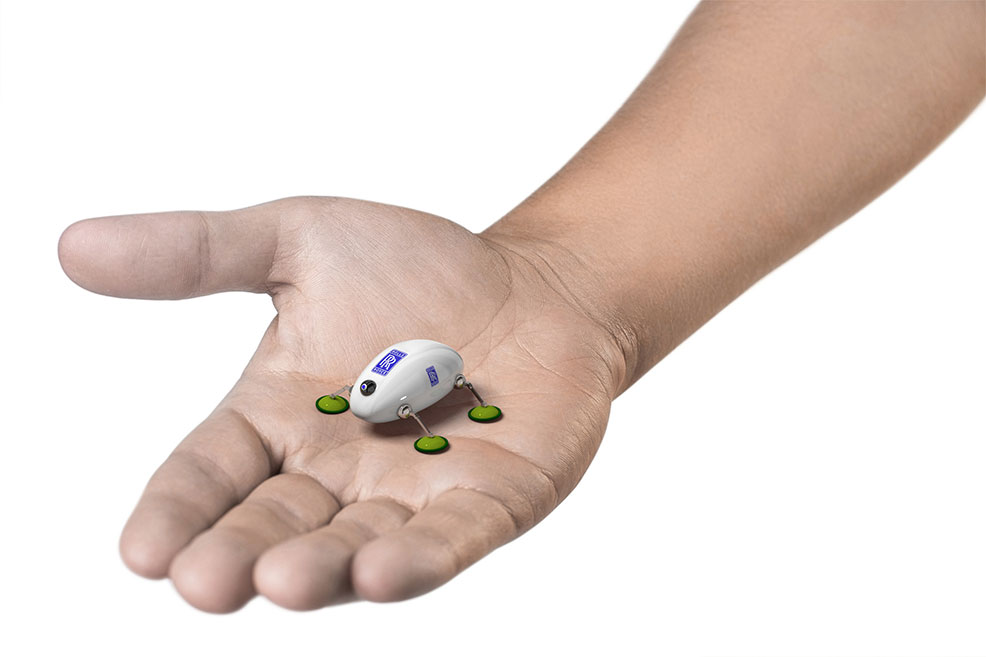
1st August 2018 Robots could revolutionise the future of engine maintenance British aerospace company Rolls-Royce has demonstrated its vision of how robotics could revolutionise the future of engine maintenance.
Earlier this year, Rolls-Royce launched IntelligentEngine, a new project to develop intelligent aircraft engines that are safer and more efficient. This month – teaming up with academics from the University of Nottingham and Harvard University – the company has unveiled a range of future concepts, from "snake" robots that work their way through the engine like an endoscope, to collaborative "swarm" robots that crawl through the insides like insects. The technologies envisioned by Rolls-Royce each represent opportunities to improve the way engine maintenance is delivered. For example, by making the inspection process faster, or by removing the need to take an engine off an aircraft in order to perform work. This has the potential to offer significant benefits for customers by reducing the costs of maintenance, increasing the availability of aircraft services and ensuring that any maintenance required is completed as quickly as possible. The technologies being presented are at varying levels of maturity and include: • SWARM robots – a set of collaborative, miniature robots, each around 10mm (0.3") in diameter. These would be deposited in the centre of an engine via a "snake" robot and would then perform a visual inspection of hard to reach areas by crawling through the engine. The robots would carry tiny cameras to send live video feedback to the operator – allowing them to complete a rapid visual inspection of the engine without having to remove it from the aircraft. This project is a partnership between Rolls-Royce, Harvard University and University of Nottingham. • INSPECT robots – a network of "periscopes" permanently embedded within the engine, enabling it to inspect itself using cameras to spot and report any maintenance requirements. These pencil-sized robots can be thermally protected from the extreme heat generated within an engine and the visual data they create would be used alongside the millions of data points already generated by today’s engines as part of their Engine Health Monitoring systems. This project is a partnership between Rolls-Royce, Oxsensis, BJR Systems, Roke Manor and the University of Nottingham. • Remote boreblending robots – teams from Rolls-Royce and the University of Nottingham have worked together to develop a robotic boreblending machine that can be remotely controlled by specialist engineers. In practice, this means that complicated maintenance tasks, such as repairing damaged compressor blades using lasers to grind parts, could be completed by non-expert ‘local’ teams. They would simply install the tool in the engine and then hand control of it over to a dedicated expert back in Rolls-Royce’s Aircraft Availability Centre, who would then direct its work remotely. This removes the need for specialist teams to travel to the location of an aircraft needing maintenance, vastly reducing the time required to return it to service. • FLARE – a pair of "snake" robots, which are flexible enough to travel through an engine like an endoscope, before collaborating to carry out patch repairs to damaged thermal barrier coatings. This project is a partnership between Rolls-Royce, University of Nottingham and Metallisation.
Richard Goodhead, Senior Vice President of Marketing at Rolls-Royce, commented: “The advancements we are making in robotics are a great example of us bringing our 'IntelligentEngine' vision to life. By exploring how we might use the rapid progress we are seeing in fields such as digital and robotics, we are ensuring that Rolls-Royce will continue to lead the way in service innovation, offering the very best value for our customers.” Dr James Kell, On-Wing Technology Specialist at Rolls-Royce, added: “While some of these technologies – such as the SWARM robots – are still a long way from becoming an everyday reality, others, such as the remote boreblending robot, are already being tested and will begin to be introduced over the next few years. We have a great network of partners who support our work in this field and it is clear that this is an area with the potential to revolutionise how we think about engine maintenance.” More animations of each robot type are available here: https://vimeo.com/album/5297916
Comments »
If you enjoyed this article, please consider sharing it:
|







